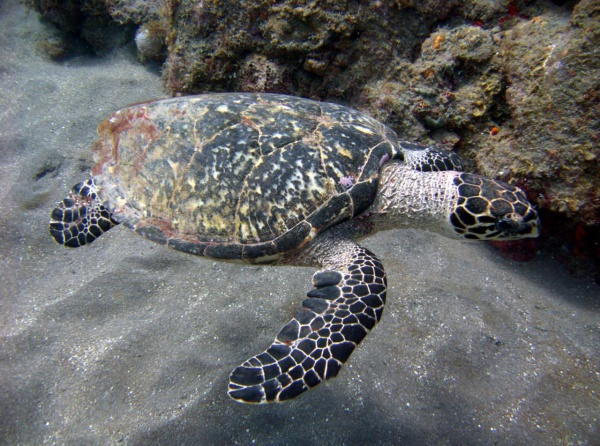Facts About Hawksbill Turtle
The hawksbill sea turtle, a critically endangered species in the Cheloniidae family, is the only extant member of the Eretmochelys genus. These turtles are distributed globally, with populations in both the Atlantic and Indo-Pacific regions. They are easily identified by their distinctive characteristics: a flattened body, a protective carapace, and flipper-like limbs adapted for swimming in the ocean. Their sharp, curved beak and serrated shell edges further distinguish them. Hawksbills inhabit both the open ocean and shallow lagoons or coral reefs.
Adult hawksbill sea turtles typically reach about 1 meter in length and weigh approximately 80 kilograms. Their diet primarily consists of sea sponges, but they also consume algae, cnidarians, comb jellies, and other marine organisms. One fascinating trait of these turtles is their biofluorescence, which is quite rare among reptiles. They prefer tropical coral reef habitats and are known for their extensive migratory journeys.
The life cycle of hawksbill sea turtles encompasses three main stages: pelagic (open ocean), benthic (sea floor), and reproductive. They mate every two years in secluded lagoons and nest on remote islands. Unfortunately, hawksbills are extensively hunted by humans for their meat and shells, which are used to produce decorative items. This exploitation, combined with habitat loss and pollution, has led to their classification as critically endangered by the IUCN.
Efforts to protect hawksbill sea turtles are underway, including international agreements that ban their capture and trade. Local conservation projects, recovery plans, and their designation as an EDGE (Evolutionarily Distinct and Globally Endangered) species are all part of the mission to secure a future for these remarkable turtles.

 Canada
Canada